One of the vines I have growing on my back fence along with my Passion Fruit (Passiflora edulis) and Coral (Antigonon leptopus) vines. It's not fragrant like the other two but it is worth having just for these beautiful blue flowers. It died off last year in one of our little cold snaps but it has finally recovered and is flowering well.

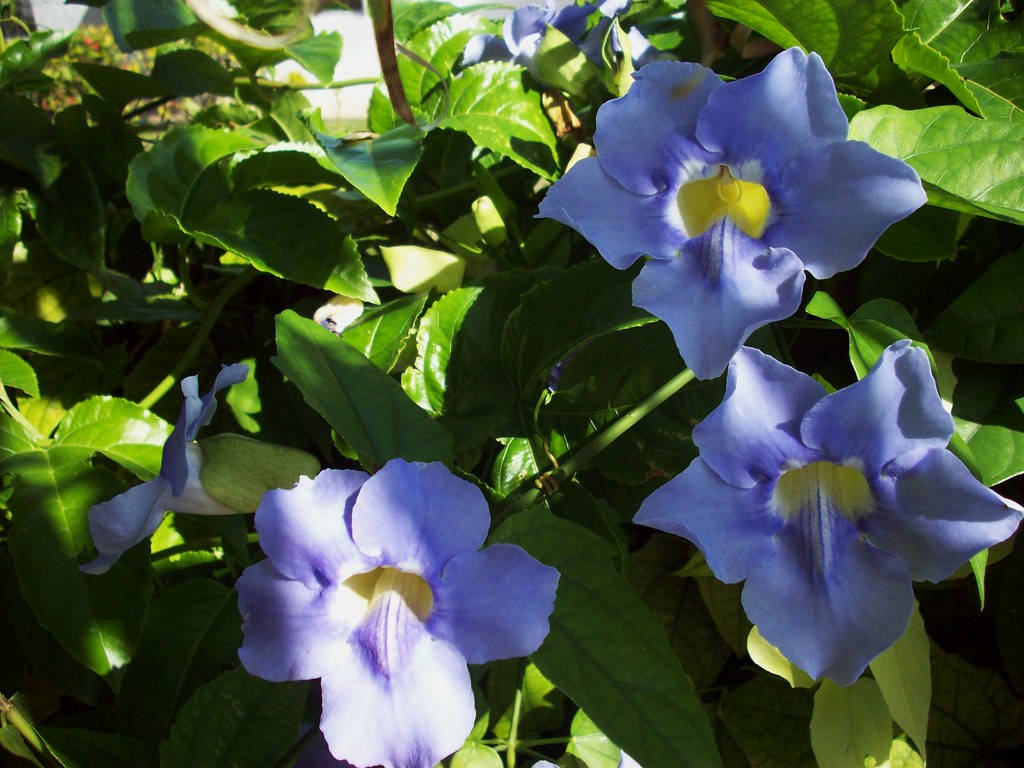
Family: Acanthaceae •
Genus: Thunbergia •
Species: grandiflora •
Country of Origin: India •
Common Names: Bengal Clock Vine, Clock Vine, Sky Flower •
From a distance, this twining, flowering vine looks like a morning glory and even up close the flowers are quite similar. The tubular flowers of the skyflower vine are a little deeper, about 3 in (7.6 cm) long, and are borne in drooping clusters. The most commonly seen varieties are sky blue to light violet although there is a white flowered type as well. Leaves are leathery and have a distinctive elongated heart shape. The plant grows fast in warm weather, easily covering a trellis or large section of fence in one season. It is one of the most free flowering vines for shade in the South and is underused due to lack of distribution. Growth slows or stops in cool temperatures, and the top is killed to the ground after a freeze. In frost free climates, it is evergreen. USDA Zones 8-11.
from (Thunbergia grandiflora) ![]()

Blue Sky Vine Thunbergia grandiflora by Eric Bronson is licensed under a Creative Commons Attribution-Noncommercial-No Derivative Works 3.0 United States License.
Based on a work at www.flickr.com
Wednesday, December 31, 2008
Blue Sky Vine Thunbergia grandiflora
Posted by Eric Bronson at 12:00 AM 2 comments
Labels: acanthaceae, vines
Tuesday, December 30, 2008
Key Lime Flowers
The mangoes aren't the only fruit trees in bloom. Even after the butchering I gave it, my Key Lime tree is blooming. I hope I end up with lots of fruit because I have an awesome recipe for Key Lime Pie!
Family: Rutaceae •
Genus: Citrus •
Species: aurantifolia •
Country of Origin: Southeast Asia •
Common Names: Key Lime, Tahitian lime, Mexican lime •
Key Lime Flowers by Eric Bronson is licensed under a Creative Commons Attribution-Noncommercial-No Derivative Works 3.0 United States License.
Based on a work at www.flickr.com
Posted by Eric Bronson at 1:23 PM 0 comments
Labels: rutaceae, tropical fruits
Friday, December 26, 2008
Dombeya wallichii
This is one of my favorite holiday bloomers! We call it Tropical Hydrangea here and it puts on a show just like real Hydrangea spp. It has a nice fragrance too, it smells like buttery popcorn! All in all this is a first rate small tree.
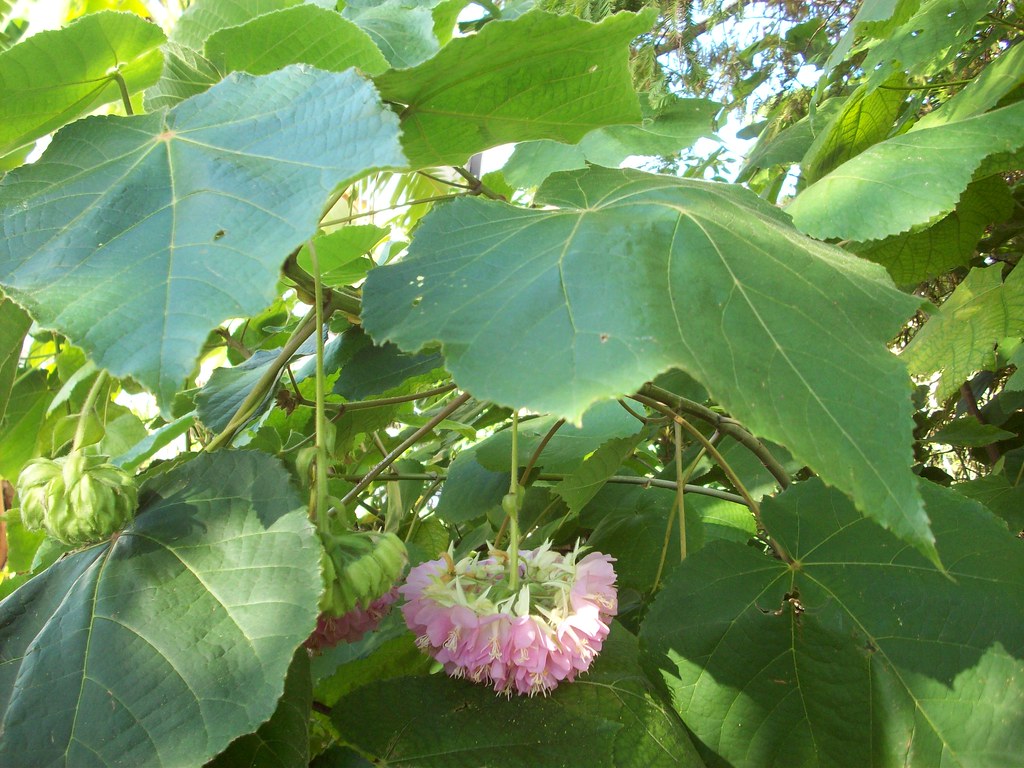
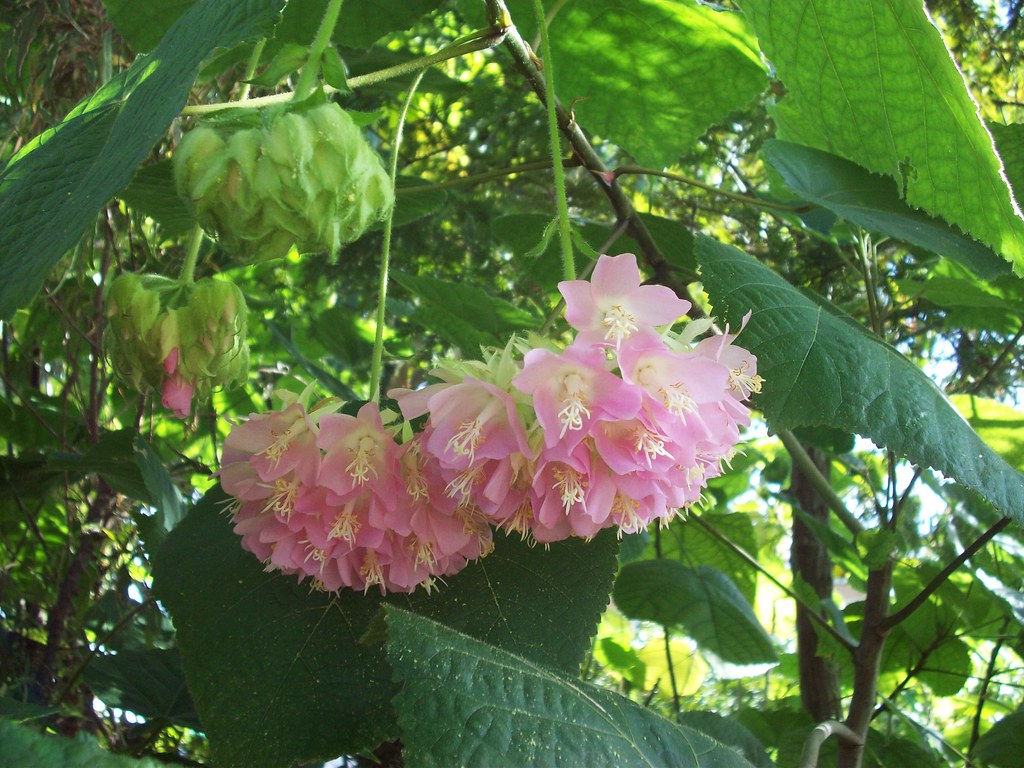

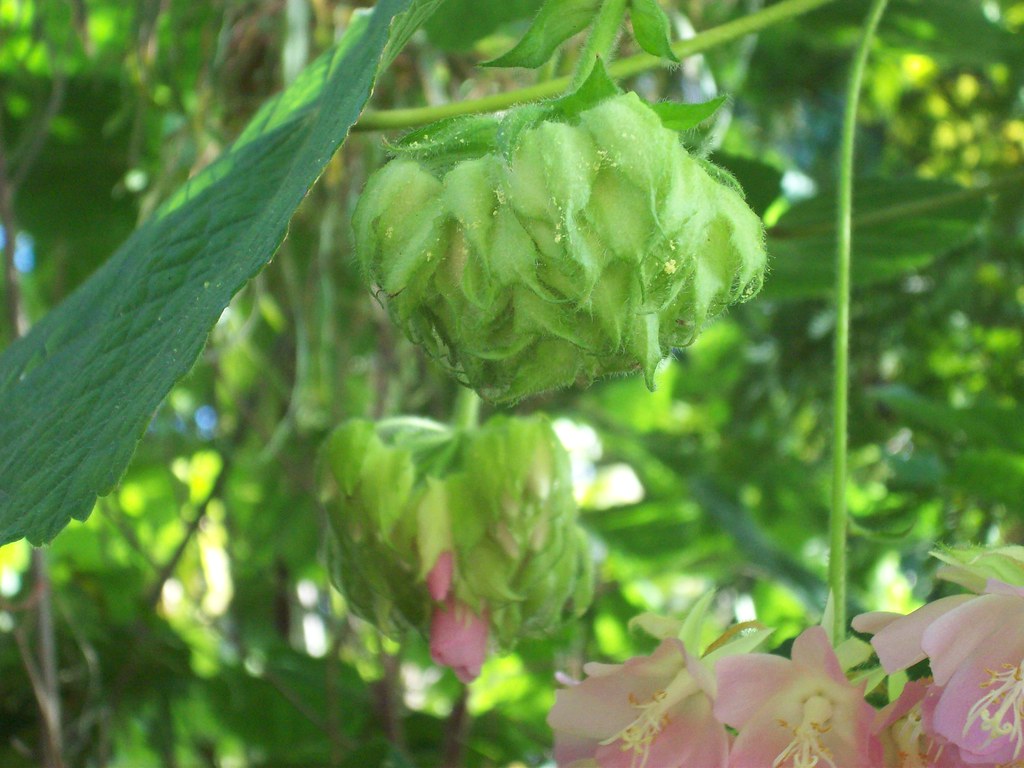 Family: Malvaceae •
Family: Malvaceae •
Genus: Dombeya •
Species: wallichii •
Country of Origin: Madagascar •
Common Names: Tropical Hydrangea, Pink Tassel Dombeya, Pink Ball •
This is an evergreen shrub or tree to 20 feet and grows in zones 10-11. Large green hairy leaves are 8-12 inches long and I've seen even larger on my plant. The flowers are borne in large clusters are typically pink and highly fragrant. They also attract a million bees to the yard. Not recommended for those with allergies to bees. This is a durable plant that tolerates many soils and light conditions. Blooms in the winter in Florida.
here is the University of Florida page
http://edis.ifas.ufl.edu/ST232
Dombeya wallichii by Eric Bronson is licensed under a Creative Commons Attribution-Noncommercial-No Derivative Works 3.0 United States License.
Based on a work at www.flickr.com
Posted by Eric Bronson at 10:03 AM 2 comments
Wednesday, December 24, 2008
Neostylis "Lou Sneary" Photo Update
I just wanted to share my latest photos. All but one flower has opened, and there were fifteen flowers in all on this spike. I've since discovered there is another flower spike growing I've put a small circle on it in the first photo, click to enlarge or you may not see it. If you would like to know more about this little beauty!
I did a post at the beginning of the month, my original post can be seen here http://ilikerareplants.blogspot.com/2008/12/neostylis-lou-sneary.html
One more thing, I have to say this is most fragrant orchid I have. It didn't smell the first couple of days but every since then it has completely filled my room with it's wonderful fragrance which smells like a combination of jasmine and lilacs, heavenly!

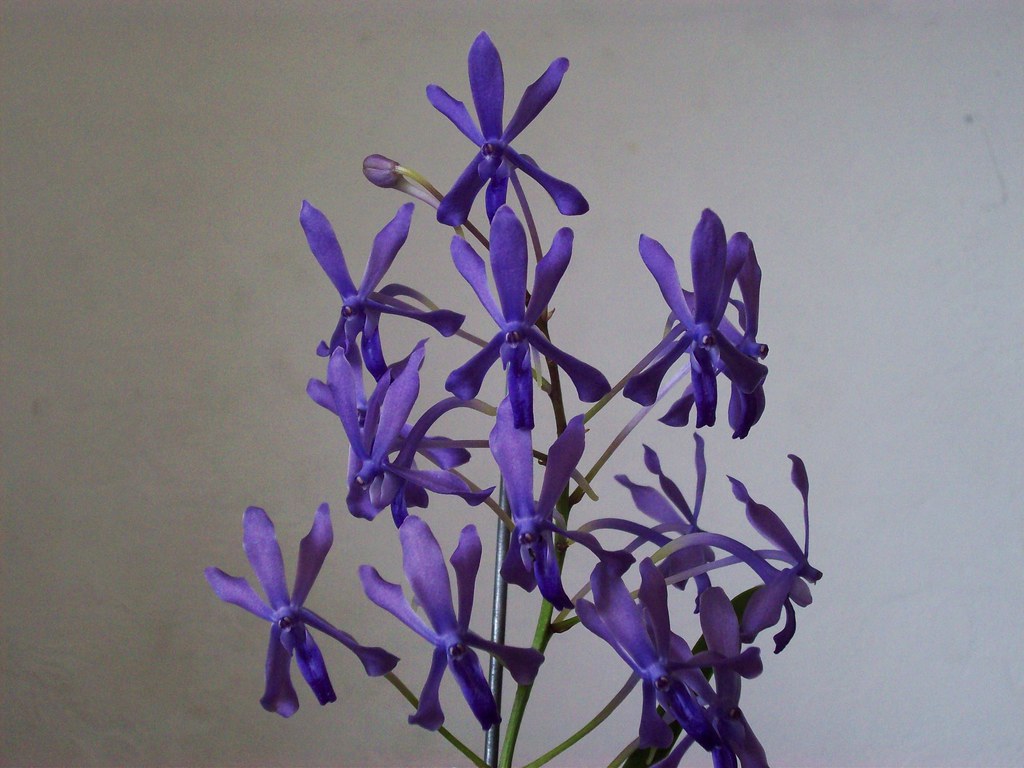
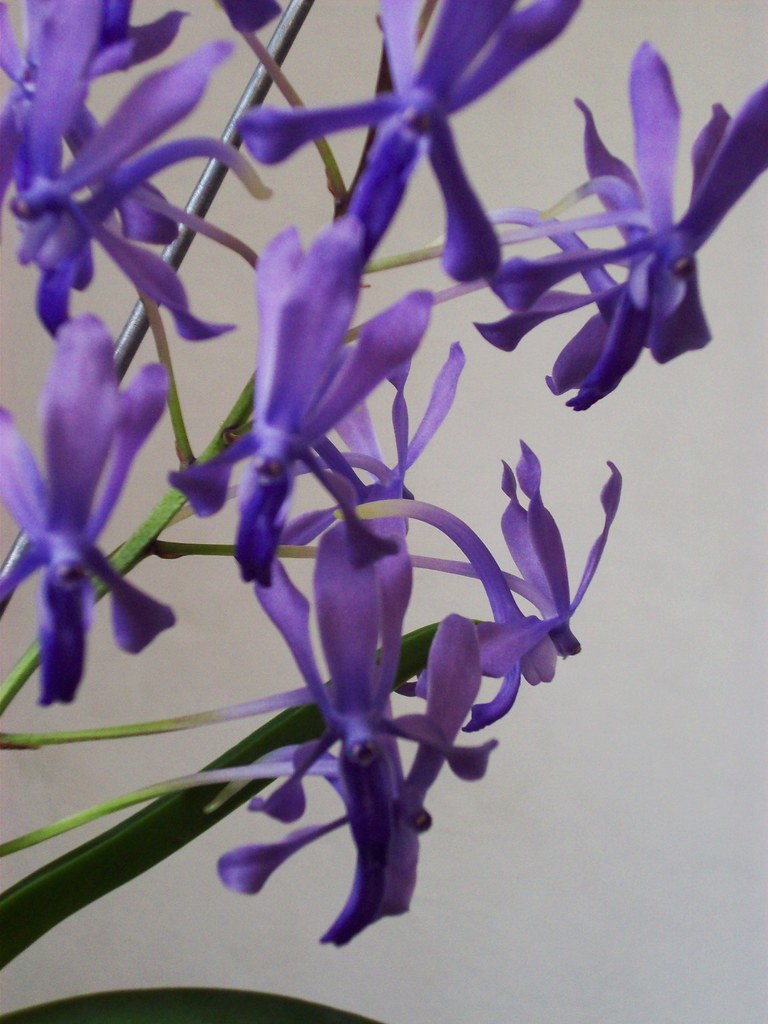
 Family: Orchidaceae •
Family: Orchidaceae •
Genus: Neofinetia x Rhynchostylis •
Species: N. falcata x R. coelestis •
Country of Origin: N/A •
Common Names: Neostylis "Lou Sneary"
Neostylis "Lou Sneary" Photo Update by Eric Bronson is licensed under a Creative Commons Attribution-Noncommercial-No Derivative Works 3.0 United States License.
Based on a work at www.flickr.com
Posted by Eric Bronson at 11:09 AM 0 comments
Labels: orchidaceae, orchids
Friday, December 12, 2008
Tropical Fruit Inventory
These are the species of tropical fruits I have growing in my yard. Some are trees that I bought. I have a handful that are bearing from seed already and others are still just seedlings. My seeds were acquired from various friends and the Rare Fruit and Vegetable Council of Broward. All of the grafted trees were purchased from RFVC plant sales. Underlined names have a link to a post that I have done about each fruit.
I have them listed by scientific name first, then some of the common names used for each fruit.
Anacardium occidentale - Cashew*
Ananas comosus - Pineapple
Ananas comosus - Pineapple "Eleuthera" (bw)(slip)
Annona diversifolia - Ilama "Red"
Annona muricata - Guanábana, Soursop
Annona reticulata - Custard Apple "San Pablo"*
Annona squamosa - Sugar-apple, Sweetsop "Kampong Mauve" ^
Annona squamosa - Sugar Apple, Sweetsop "Bill Whitman Purple"
Artocarpus heterophyllus - Jackfruit *
Artocarpus hypargyraea - Kwai Muk
Artocarpus integer - Chempedak*
Artocarpus odoratissimus - Marang*
Averrhoa carambola - Carambola, Star Fruit *
Casimiroa edulis - White Sapote "SES 2"
Chrysophyllum caimito - Caimito "Green" *
Citrus aurantifolia - Key Lime ^
Clausena lansium - Wampee, Wampi
Cocos nucifera - "Dwarf Malay"
Cocos nucifera - "Dwarf Yellow Spicata" (bw) *
Eugenia aggregata - Cherry of the Rio Grande *
Eugenia brasiliensis - Grumichama *
Eugenia klotzschiana - Pera Do Campo *
Eugenia luschnathiana - Ubaias, Pitomba
Eugenia neonitida - Pitangatuba *
Eugenia stipitata- Araçá-boi *
Eugenia uniflora - Surinam Cherry, Pitanga "Black" *
Eugenia uvalha
Garcinia aristata - Cuban Mangosteen
Garcinia intermedia - Lemon Drop Mangosteen *
Garcinia lateriflora - Achachairú, Camboriú *
Garcinia livingstonei - Imbe *
Garcinia macrophylla - Bacuriparí *
Garcinia madruno - Charichuela (bw) *
Garcinia sp.?
Garcinia xanthochymus
Glycosmis trifoliata - Orange Berry, Gin Berry *
Hylocereus megalanthus - Yellow Dragon Fruit (bw)(cutting)
Lacmellea sp.*
Lansium domesticum - Langsat
Mangifera indica - "Julie" ^
Mangifera indica - "Neelum" ^
Musa sp. "Jamaican Red"
Musa sp.
Myrciaria vexator - Blue Grape *
Passiflora edulis - Passion Fruit "Bountiful"
Passiflora quadrangularis - Giant Granadilla
Pereskia aculeata *
Pereskia bleo *
Plinia edulis - Cambucá *
Psidium friedrichsthalianum- Costa Rican Guava *
Psidium littorale "Yellow" *
Punica granatum - Vietnamese Pomegranate
Rollinia deliciosa - Biribá*
Vitis rotundifolia - Muscadine Grape "Gold Scuppernong"
(updated 07-13-2009)
Key:
* = denotes grown from seed
(bw) = from Bill Whitman Estate
^ = grafted
This is my wish list! Anyone have seeds to share, trade, or sell? These are some unusual finds here, but maybe in your area they are not so rare! Do I have something you want? Feel free to email me. (serious inquiries only, note: seeds would only be available when the fruit is in season.) I will be hunting each one down and adding them to my collection. When I do, I'll start doing posts on these species as well!
I have them listed by scientific name first, then some of the common names used for each fruit.
Annona cornifolia - Ariticum de Raposa
Annona crassiflora - Ariticum de Moita
Annona montana - Mountain Soursop
Annona senegalensis - African Custard Apple
Annona spraguei
Annona stenophylla - Groundsop
Annona tomentosa - Marolo
Anonidium mannii - Junglesop
Artocarpus lakoocha - Lakoocha
Artocarpus sericicarpus - Pedalai
Bromelia antiacantha - Caraguatá
Bromelia pinguan - Necktie
Citrus australasica - Finger Lime
Eugenia victoriana - Sundrop, Guayabilla
Friesodielsia obovata - Monkey Fingers
Garcinia magnifolia
Garcinia prainiana - Button Mangosteen
Hexalobus monopetalus - Baboons Breakfast
Musa 'Thousand Fingers'
Musa 'Praying Hands'
Nephelium lappaceum - Rambutan
Nephelium mutabile - Pulasan
Pourouma cecropiaefolia - Amazon Tree Grape
Psidium eugeniaefolia - Araçá-una
Psidium myrtoides - Araçá-icica
Rollinia rugulosa
Rollinia sylvatica
Salacca affines - Red Salak
Sandoricum koetjape - Santol
(updated 07-13-2009)
p.s. I will be updating this monthly so check back from time to time or subscribe! 12-12-2008
Posted by Eric Bronson at 8:00 AM 1 comments
Labels: tropical fruit inventory, tropical fruits, wish list
Wednesday, December 10, 2008
Cool Stuff Around the Yard!
Moss and lichens growing on my Phoenix roebelenii. I just love the way they grow all over everything here. I'm not sure what species they are. Look at the brutal spines on this volunteer palm (Livistona sp.?) It just sprouted and I like the way it looks so I let it grow!
Look at the brutal spines on this volunteer palm (Livistona sp.?) It just sprouted and I like the way it looks so I let it grow! Flowers from my Kalanchoe thyrsifolia. These plants are typically grown for the unique leaves that are round and succulent. I thought the flowers were pretty unique too!
Flowers from my Kalanchoe thyrsifolia. These plants are typically grown for the unique leaves that are round and succulent. I thought the flowers were pretty unique too!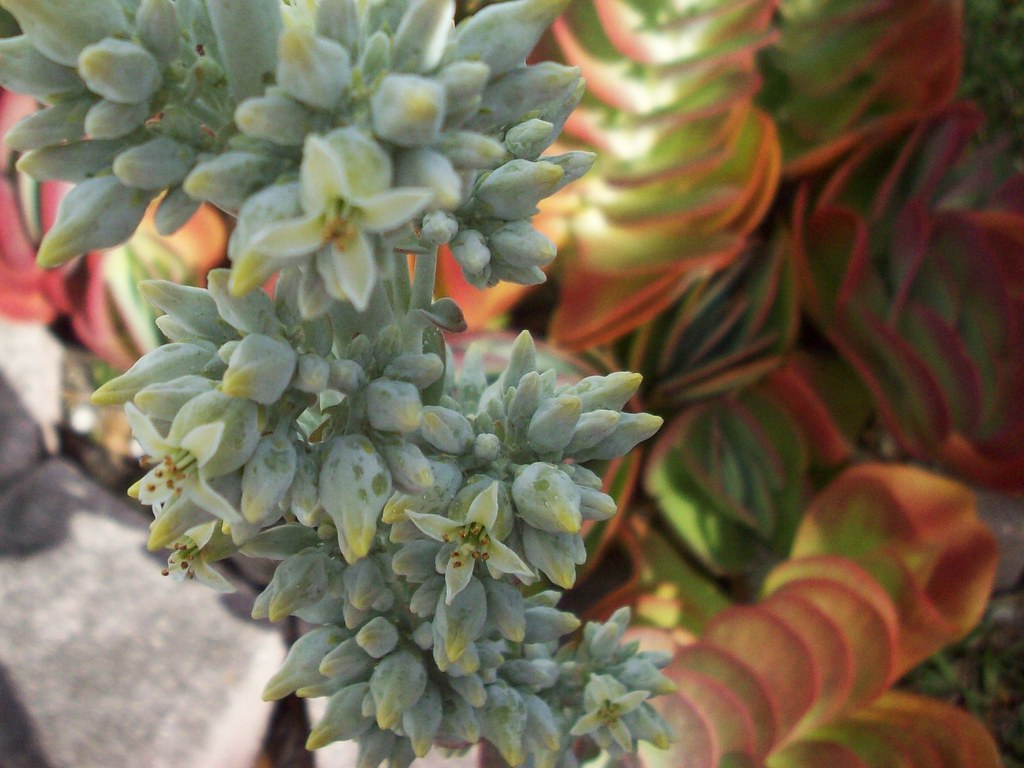 Pentas lanceolata volunteer! I love it when good things pop up in the yard. I have a "don't pull too early" policy with weeds. I like to wait and see what it is first. This is a keeper.
Pentas lanceolata volunteer! I love it when good things pop up in the yard. I have a "don't pull too early" policy with weeds. I like to wait and see what it is first. This is a keeper.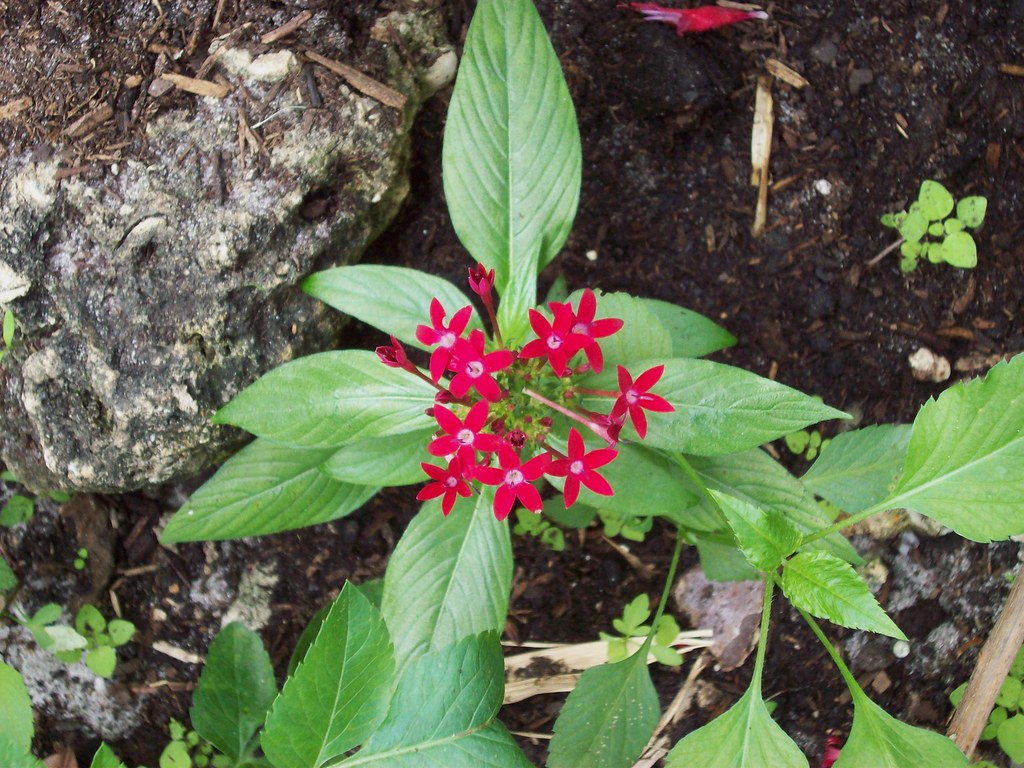 White leaves on my Thunbergia grandilflora must be some sort of mineral deficiency! It was about dead, but now it seems like it is coming back to life.
White leaves on my Thunbergia grandilflora must be some sort of mineral deficiency! It was about dead, but now it seems like it is coming back to life.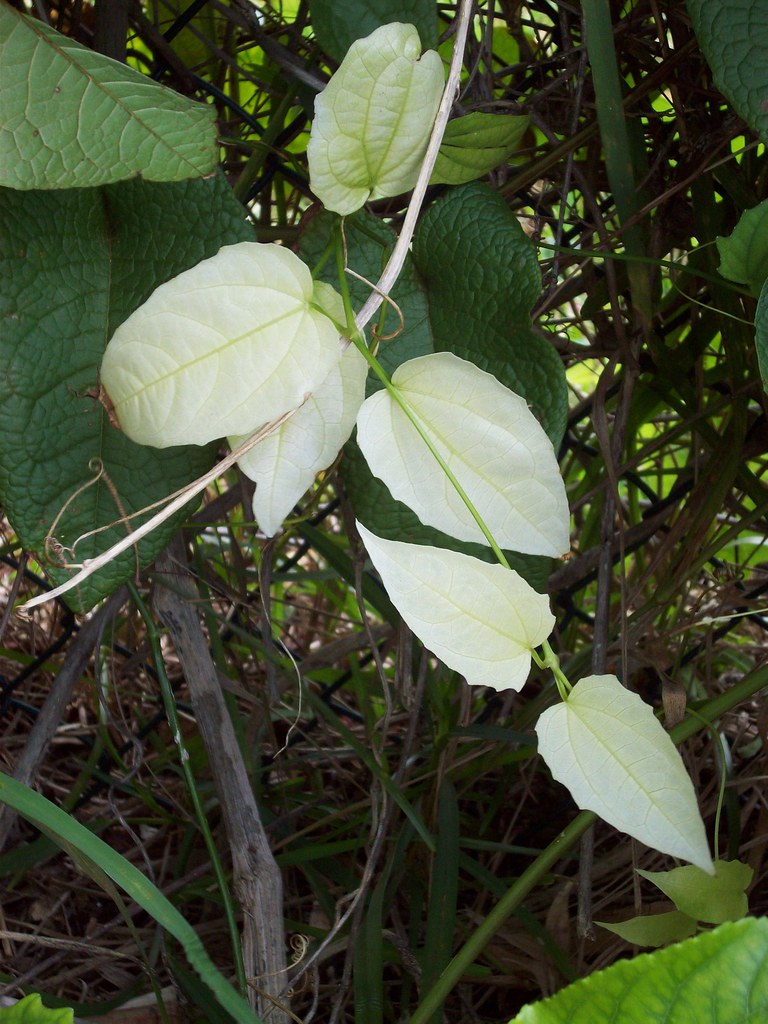 Asclepias curassavica sprouts everywhere in my yard. It's the Monarch butterflies larval food source so I let it grow everywhere even though it's real leggy this time of the year.
Asclepias curassavica sprouts everywhere in my yard. It's the Monarch butterflies larval food source so I let it grow everywhere even though it's real leggy this time of the year.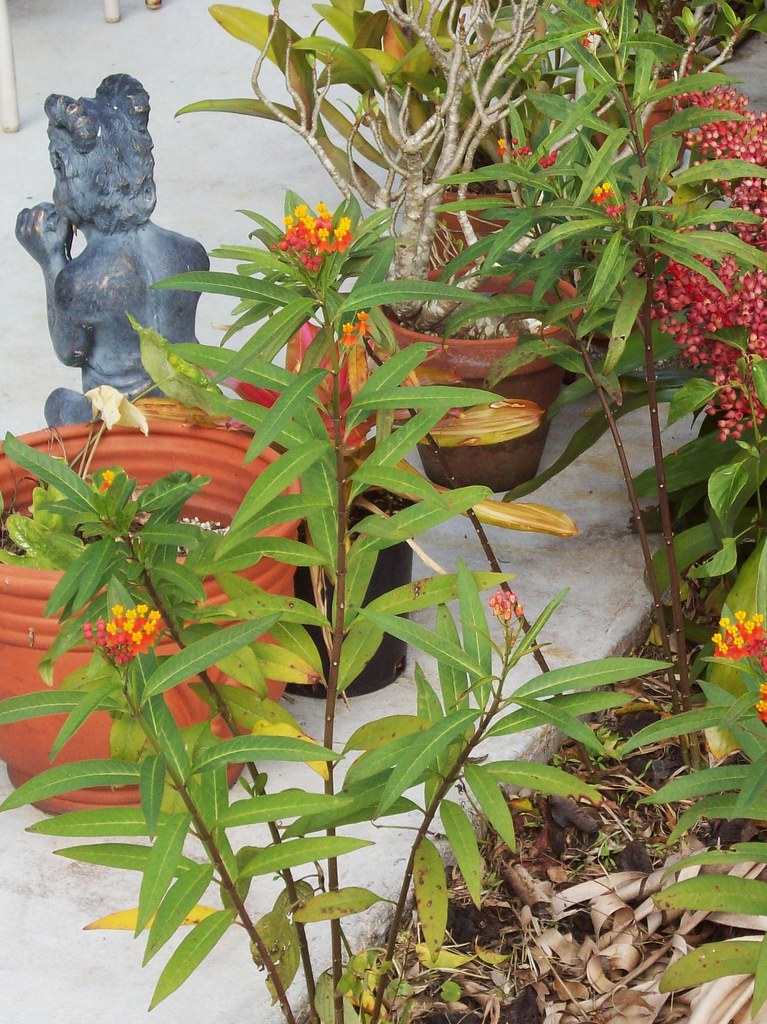 Hope you enjoy the small things as much as I do!!
Hope you enjoy the small things as much as I do!!
Cool Stuff Around the Yard! by Eric Bronson is licensed under a Creative Commons Attribution-Noncommercial-No Derivative Works 3.0 United States License.
Based on a work at www.flickr.com
Posted by Eric Bronson at 12:55 PM 1 comments
Labels: around the yard, cool stuff
Friday, December 5, 2008
Neostylis "Lou Sneary"
This should be right up your alley Kortney! I told you I have some good things in store for you! My Neostylis "Lou Sneary" has finally bloomed! I think I've had it for three or four years now and this is the first time it's bloomed. Yes, I'm a terrible grower! Hopefully it will bloom every year now. Also, there isn't a fragrance yet either? I wonder why? I would expect this orchid to be a highly fragrant as both parents in this intergeneric hybrid are fragrant. Neofinetia falcata is famous for being highly fragrant. I'll go out on a limb and say that Rhynchostylis coelestis is too! I have two other Rhynchostylis species R. gigantea & R. retusa and they both smell heavenly! I will post more photos and an update when it blooms out. Enjoy!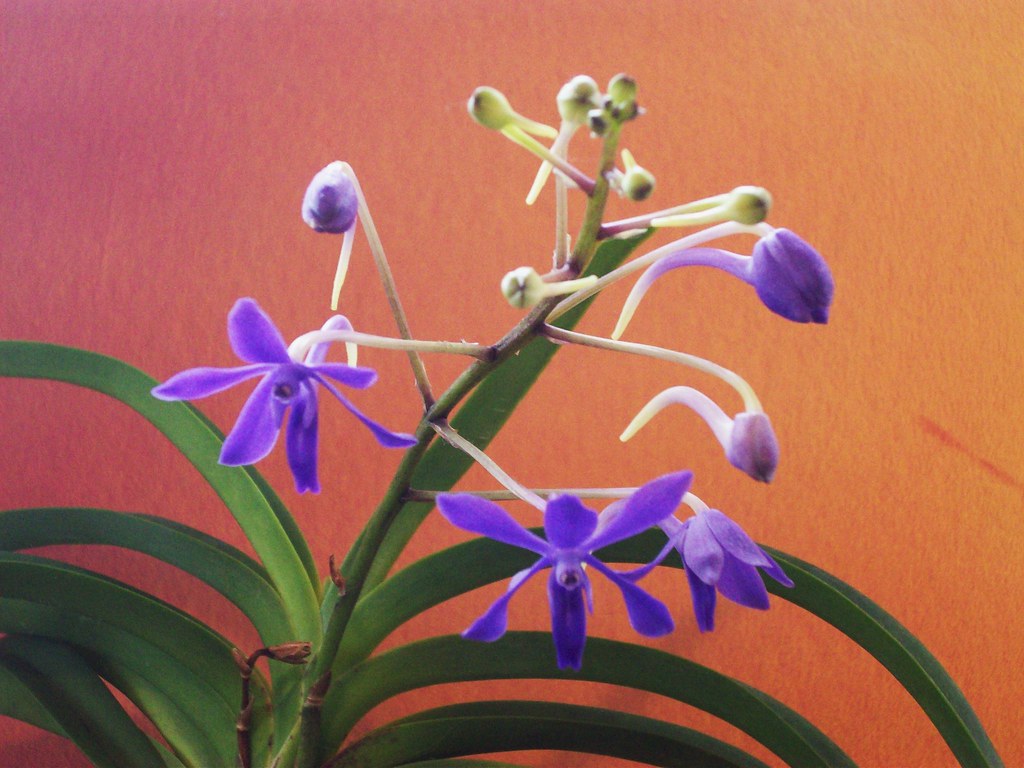



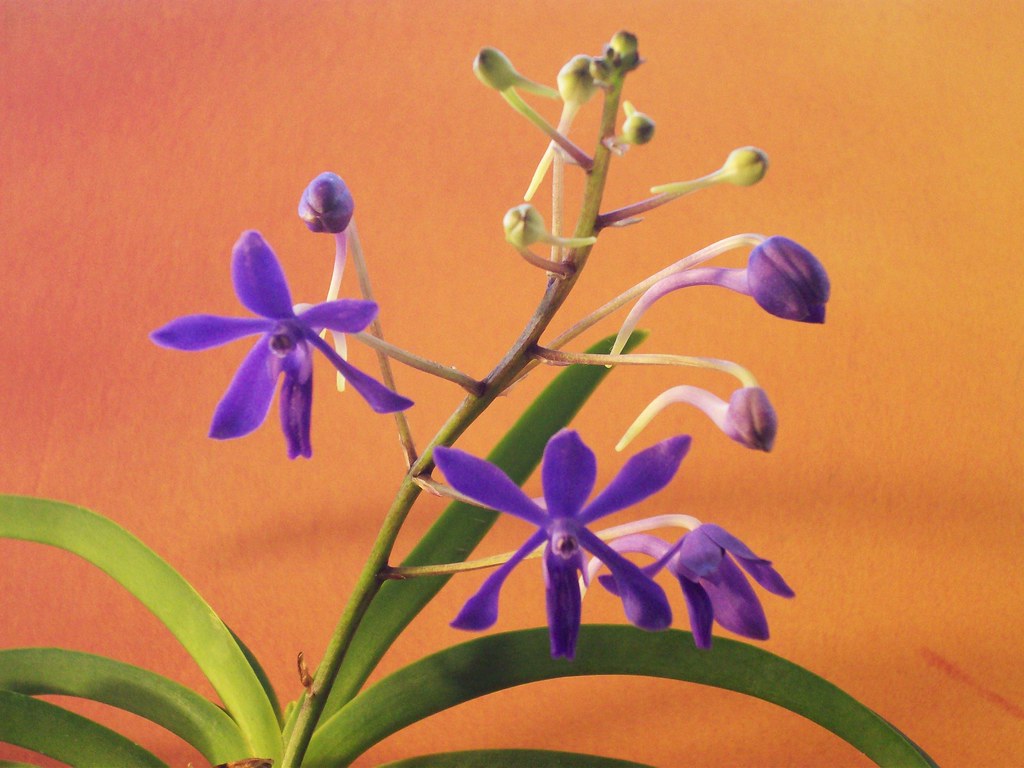
Family: Orchidaceae •
Genus: Neofinetia x Rhynchostylis •
Species: N. falcata x R. coelestis •
Country of Origin: N/A •
Common Names: Neostylis "Lou Sneary"
Neostylis "Lou Sneary" by Eric Bronson is licensed under a Creative Commons Attribution-Noncommercial-No Derivative Works 3.0 United States License.
Based on a work at www.flickr.com
Posted by Eric Bronson at 11:38 AM 2 comments
Labels: orchidaceae, orchids
Monday, December 1, 2008
Orchid Seed Capsule
I did a post on this Dendrobium orchid in September that you can see here
http://ilikerareplants.blogspot.com/2008/09/dendrobium-bigibbum-compactum-hybrid.html
I found an unusual find, there is a seed capsule, it must have been pollinated by an ant or a gnat. I'm not quite sure. I find it odd since this plant is indoors. There isn't much I can do with the capsule as I don't own a laboratory. There is a lot of science involved which is better explained by an expert. I know Wikipedia is imperfect sometimes but this information is accurate enough to give you an idea of how this complex process works. I made a few minor edits.
The seeds are generally almost microscopic and very numerous, in some species over a million per capsule. After ripening they blow off like dust particles or spores. They lack endosperm and must enter symbiotic relationship with various mycorrhizal basidiomyceteous fungi that provide them the necessary nutrients to germinate, so that all orchid species are mycoheterotrophic during germination and reliant upon fungi to complete their lifecycle. As the chance for a seed to meet a fitting fungus is very small, only a minute fraction of all the seeds released grow into an adult plant. In cultivation, germination typically takes weeks, while there is a report of one paphiopedilum that took fifteen years.
Horticultural techniques have been devised for germinating seeds on a nutrient-containing gel, eliminating the requirement of the fungus for germination, greatly aiding the propagation of ornamental orchids. The main component for the sowing of orchids in artificial conditions is the agar. The substance is put together with some type of carbohydrate (actually, some kind of glucose) which provides qualitative organic feed. Such substance may be banana, pineapple, peach or even tomato puree or coconut milk. After the cooking of the agar (it has to be cooked in sterile conditions) the mix is poured into test tubes or jars where the substance begins to jelly. The seeds have to be put in the dish above boiling water, in the steam because that secures sterile conditions. The test tubes are put diagonally after that.
from wikipedia http://en.wikipedia.org/wiki/Orchid
The seed capsule is at the rear far left.



Orchid Seed Pod by Eric Bronson is licensed under a Creative Commons Attribution-Noncommercial-No Derivative Works 3.0 United States License.
Based on a work at www.flickr.com
Posted by Eric Bronson at 9:09 AM 2 comments
Labels: orchidaceae, orchids
Sunday, November 30, 2008
Naturalizing Orchids Part II
Here are a couple more orchids I'm trying to naturalize on my trees. This first one is Prosthechea cochleata one of Florida's native orchids it has interesting flowers, but there aren't any blooms to share with you, so I'll save that for later. I'm trying to establish it in the crook of my Pink Ipê (Tabebuia impetiginosa) it is taking off nicely with lots of new root growth. I can't wait to see it bloom this year!
This one is a funny story. I accidentally broke this cane off one of my larger plants a Dendrobium hybrid and just for kicks I tied the broken cane to my Black Olive (Bucida buceras). I though it died to be honest because it shriveled, but low and behold a new keiki. It's growing vigorously too. This should produce a massive clump eventually. That will be quite a sight when it is in bloom.
Naturalizing Orchids Part II by Eric Bronson is licensed under a Creative Commons Attribution-Noncommercial-No Derivative Works 3.0 United States License.
Based on a work at www.flickr.com.
Posted by Eric Bronson at 7:23 AM 4 comments
Labels: orchidaceae, orchids
Wednesday, November 26, 2008
Io Moth Caterpillars
I have a million little caterpillars eating my coconut palms. They are the larval form of the beautiful Io Moth. I find them from time to time throughout the year. It is found throughout most of America east of the Rockies. The adult Io Moth has a wingspan of 2.5-3.5 inches. This species is sexually dimorphic, males having bright yellow forewings, body, and legs, while females have reddish brown forewings, body, and legs. The males also have much bigger plumose (feathery) antennae than the females. Both have one big black to bluish eyespot with some white in the center, on each hindwing, a defense mechanism meant to frighten off potential predators. [1] We have our own subspecies here in Florida Automeris io lilith and the males have a distinct red-brown forewings. The same type of red form is also found in southern Mexico and the Bahamas. Io moth larvae are leaf feeders, gregarious in early instars, then solitary as they grow. After several weeks of feeding, they make a simple paper-like cocoon away from the host plant. In Florida, there are three to four generations per year. There usually is only one generation in northern states. [2]
The io moth has a long list of host plants, with over 100 recorded plant genera in North America, including such diverse plants as roses, cotton, hibiscus, azaleas, willows, clover, and palms. In Florida, io moth larvae are commonly found on oaks and other hardwoods. [3] I'll say let's go ahead and add Coconut (Cocos nucifera), as a larval food in Florida!!!!
Early instar larvae of the io moth, Automeris i0 11-26-2008


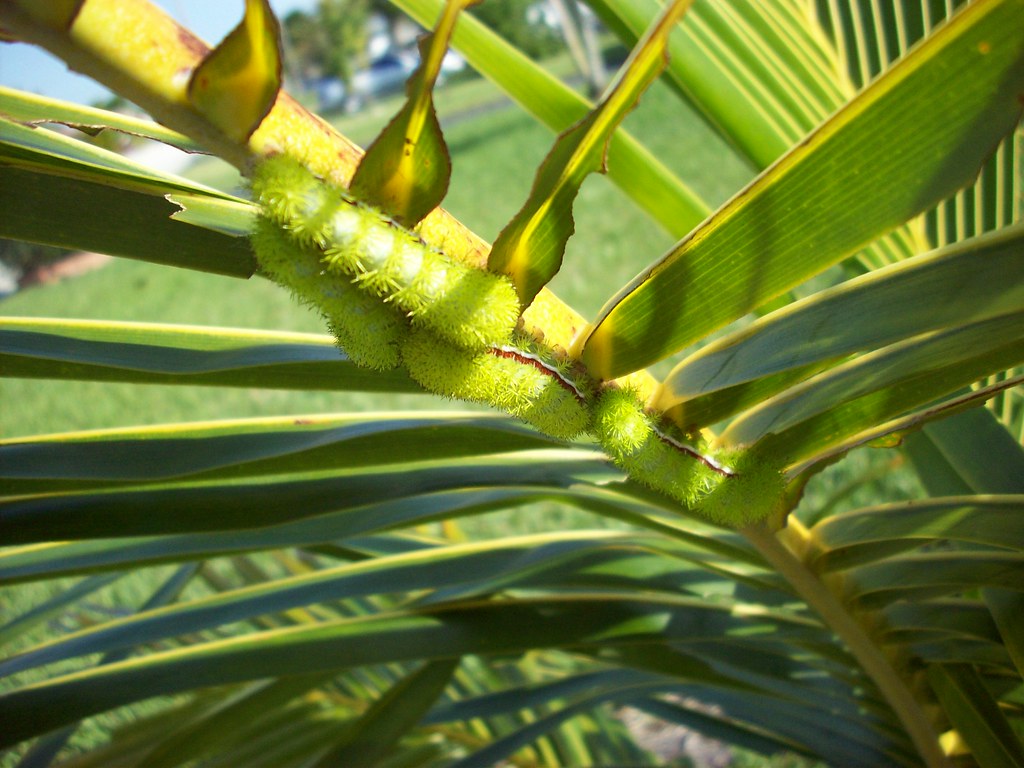 Adult Io Moths Female(top)and male(below)
Adult Io Moths Female(top)and male(below) photo courtesy of http://en.wikipedia.org/wiki/Image:Automeris_ioFMPCCA20040704-2974B1.jpg
photo courtesy of http://en.wikipedia.org/wiki/Image:Automeris_ioFMPCCA20040704-2974B1.jpg
Original photo by Patrick Coin
Family/Subfamily: Saturniidae/Hemileucinae •
Genus: Automeris •
Species/SubSpecies: io/lilith •
Common Names: Io Moth •
[1] http://en.wikipedia.org/wiki/Io_moth
[2] http://creatures.ifas.ufl.edu/misc/io_moth.htm
[3] http://creatures.ifas.ufl.edu/misc/io_moth.htm
Io Moth Caterpillars by Eric Bronson is licensed under a Creative Commons Attribution-Noncommercial-No Derivative Works 3.0 United States License.
Based on a work at www.flickr.com
Posted by Eric Bronson at 7:29 AM 3 comments
Labels: io moth, saturniidae











